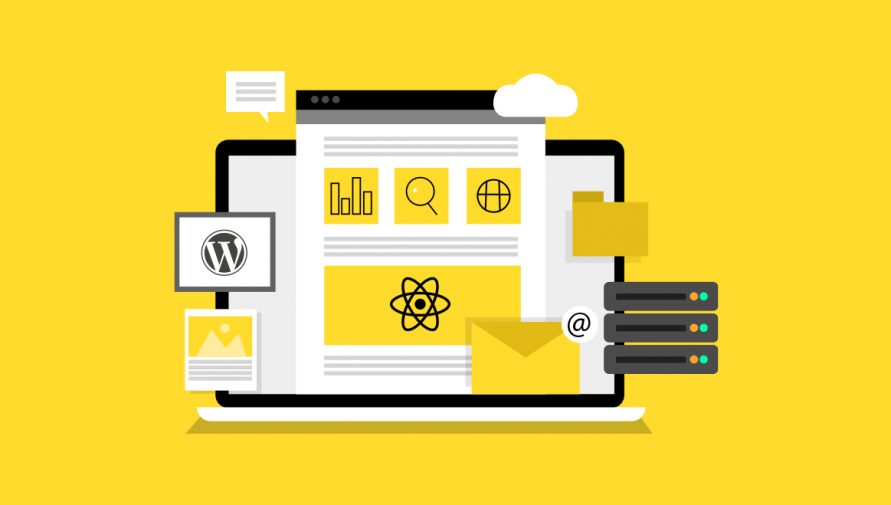The JAMstack is gaining popularity, and many believe that the JAMstack approach to web development, which is quicker, more secure, and more stable than the conventional stack, is the way of the future. However, it has several flaws and difficulties.
WordPress is basically built on LAMP architecture
The Linux operating system, Apache HTTP Server, MySQL relational database management system, and PHP programming language make up the LAMP Stack. Requests from the browser the request are handled by PHP. A database search is performed. The page is filled with content. For a while, that worked. But you will never believe what occurred next.
- Websites grew in size. And bigger. And bigger!
- Images. There are several photos. There are also tracking codes. And there’s JavaScript.
Between March 2015 and March 2018, the average size of a desktop webpage climbed by 25.8%, while the average size of a mobile webpage increased by 77.5 percent. And, if you look at WordPress sites particularly, they suffer from bloat much more: The median desktop webpage size grew by 15%, although the median is still much larger than the average, while the median mobile webpage size climbed by 28.6%. Yes, websites are large. And the LAMP stack, with all of its processing and querying, isn’t helping matters.
Many individuals are attempting to solve this problem by utilizing caching and speed-related plugins. Just search through the WordPress plugin repository for pages and pages of plugins attempting to solve this problem. However, all of these options are tough to set up and only go you so far.
What about AMP? Does not that solve all our problems?
People are being forced to use a new web format via AMP. But, do we really need to embrace another web format when the current one is the industry standard and working perfectly? And the caching aspect is not ideal either: Google caches your site on THEIR servers and delivers it up from there, implying that you no longer have total control over your precious online property.
One of the things we have always advocated for is controlling your own content rather than relying on third-party services like social media. Your website is the only area on the internet that you have total control over.
Website security is also getting harder
Due to security flaws, another plugin needs to be patched every day. In reality, outdated plugins are to blame for the bulk of online attacks. Hopefully, you’re upgrading and patching often; otherwise, hackers will have a window of opportunity.
The great majority of website owners and managers are either unaware of the continual changes that need to be made to plugins or WordPress core, or are aware but don’t upgrade because they are afraid it will destroy their site, or because they lack the time and resources to do so.
Let’s talk headless. The stack is formerly known as static.
JAMstack is a word used by Matt Billman, the inventor of Netlify, to describe what a static site can accomplish now that it can have dynamic functionality owing to contemporary JavaScript, CSS, and other technologies.
Headless WordPress as JAMstack is JavaScript, API, and Markup
Netlify advocates the idea of creating websites that are mostly frontend-focused. APIs provide content, Javascript provides dynamic functionality, and Markup is used to portray the material.
Static site generators are the next big thing
Smashing Magazine transitioned to Netlify to take advantage of the JAMstack a few years ago. There weren’t as many possibilities back then as there are now. Despite the fact that the transfer took nearly two years, they said it was worthwhile since it made their site quicker and more secure. Smashing Magazine’s creator, Vitaly, said:
“With a good CDN, complete HTTP/2 support, and service workers in place, we were able to outperform our previous performance results last year.” Even with a clever Nginx setup, the performance we could obtain with a pre-built website improved with JavaScript was nothing short of amazing.
Four Main Advantages of Headless WordPress Development
Faster webpage speed because
- Every page is pre-rendered.
- PHP does not have to process.
- There is no underlying processing server that could be loaded.
More secure
There are no vulnerable endpoints headless WordPress development agency, unlike with the LAMP design, where everything has to be patched on a regular basis, including the database and server’s OS, PHP, and so on. These changes simply do not exist in JAMstack’s reality since it is database-free.
Highly scalable (infinitely scalable)
When you are merely supplying static assets that don’t need to be processed, you can grow them virtually endlessly because they utilize so few resources.
Cheaper
There are several free and low-cost static site hosting providers available. These expenses can mount up quickly if your site receives a lot of traffic, but they are far cheaper than traditional hosting.
All the static generators with Headless WordPress
Static site generators are platforms that let you construct page templates and then run a build process to produce all of your site’s pages. There are several static site generators available, with new ones appearing on a daily basis. Netlify has compiled a directory of 199+ static site generators.
If it is so great, why is not everyone using JAMstack?
- The command line is required for static site generators. You can link your static site generator to certain CMSs, but they’re far more limited than what WordPress has to offer.
- It may take many hours to complete the construction. This might make it difficult to publish often or make fast modifications. If you edit one page, you will have to republish your entire site and wait for it to finish before making another modification.
- There are no capabilities for multiple authors.
- Developer abilities are necessary for this project.
- The theme and plugin ecosystem is limited. Unlike WordPress, which has over 50,000 plugins and millions of themes and theme builders, such as Elementor.





